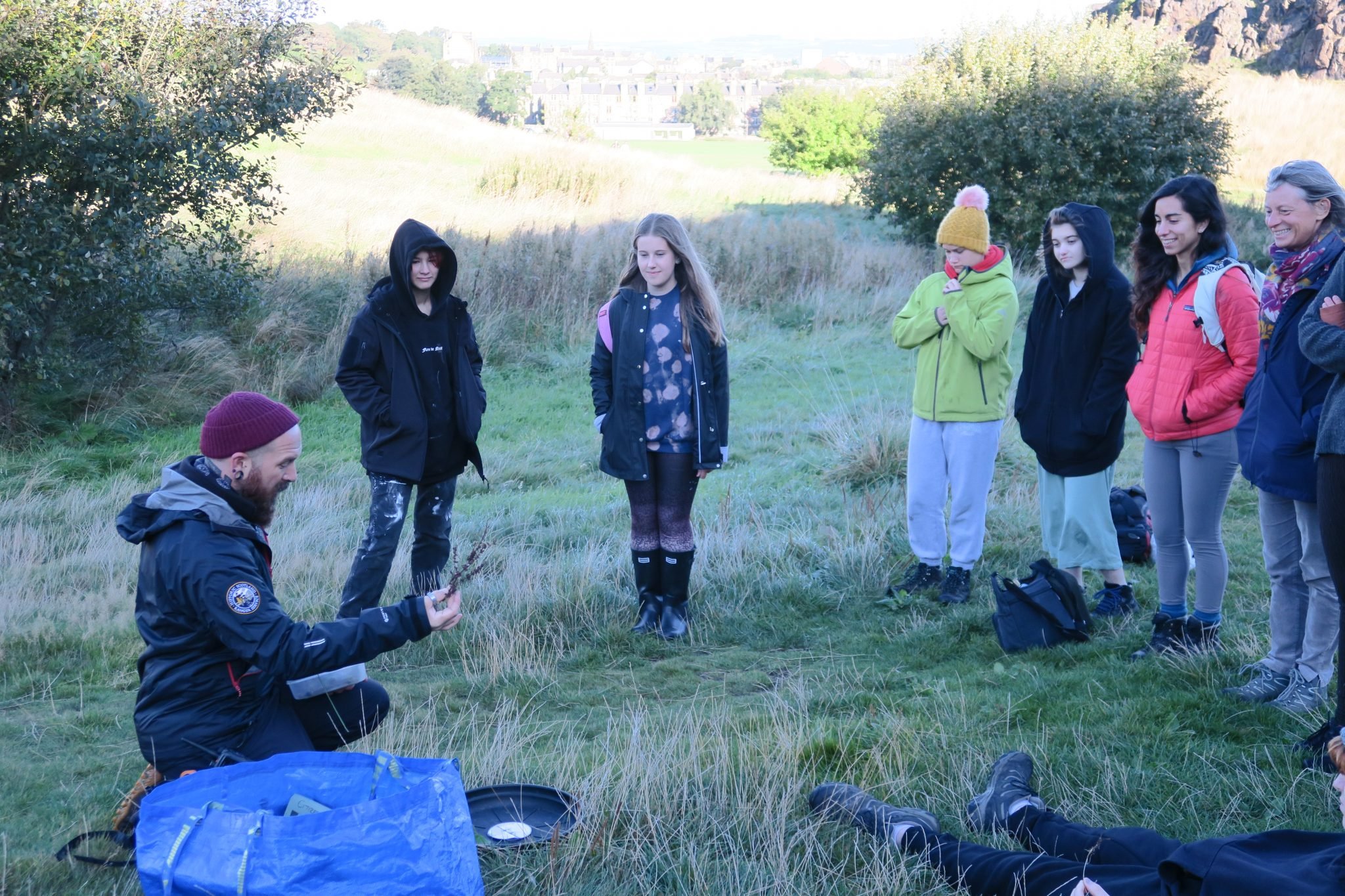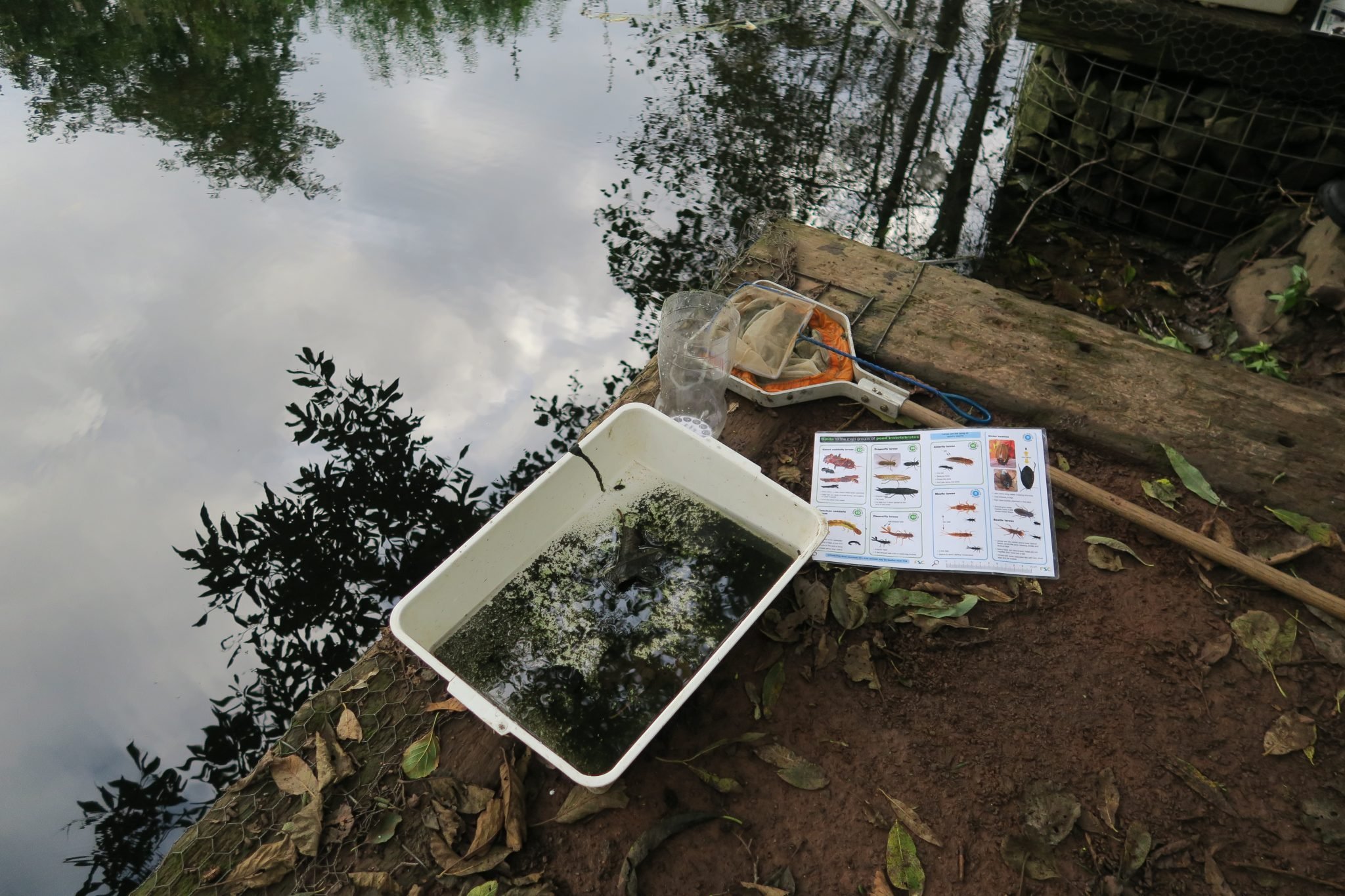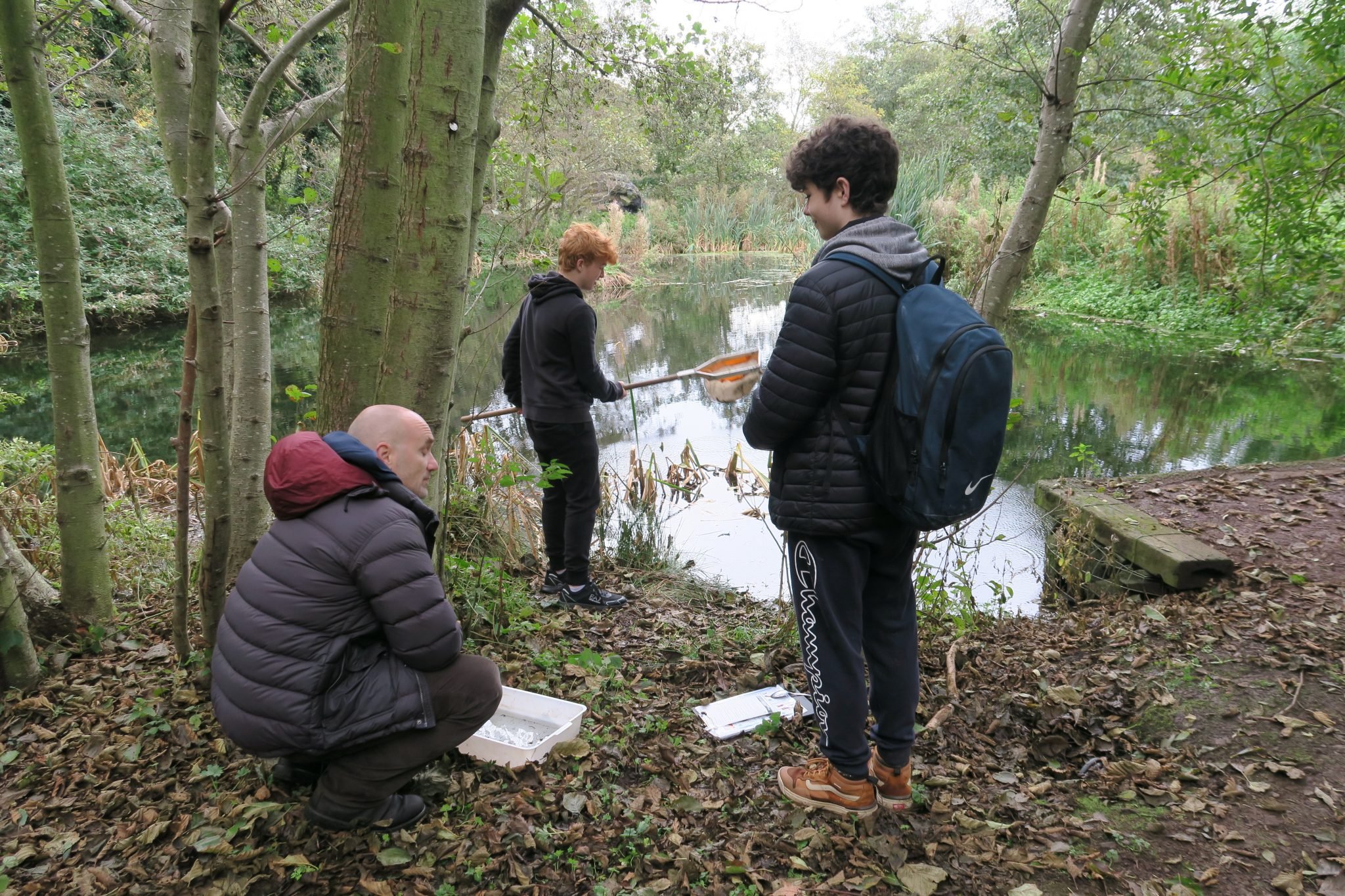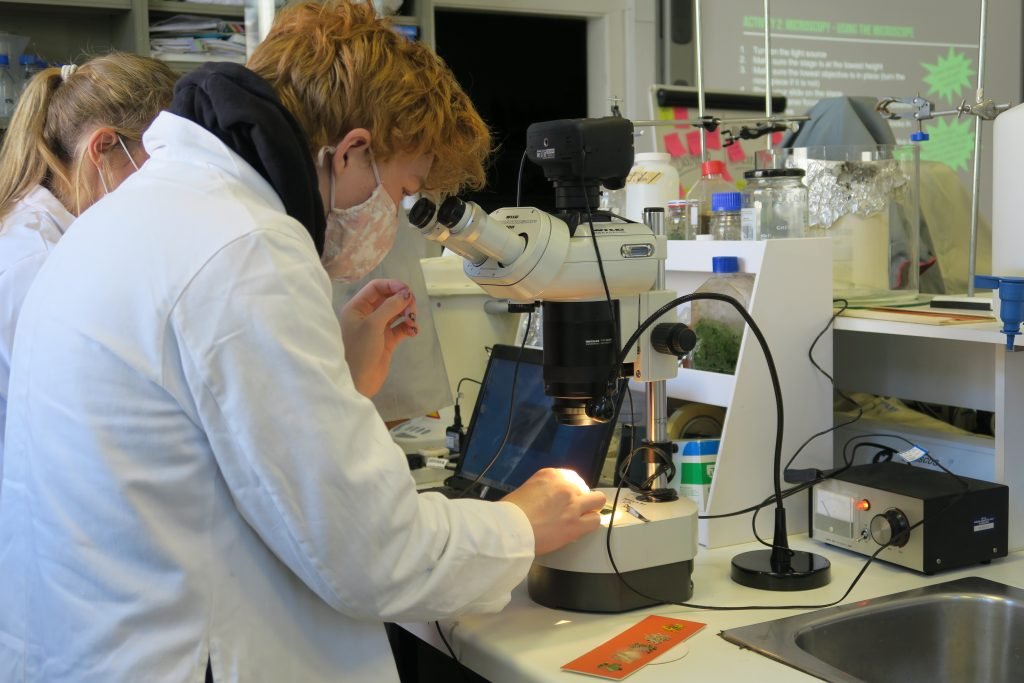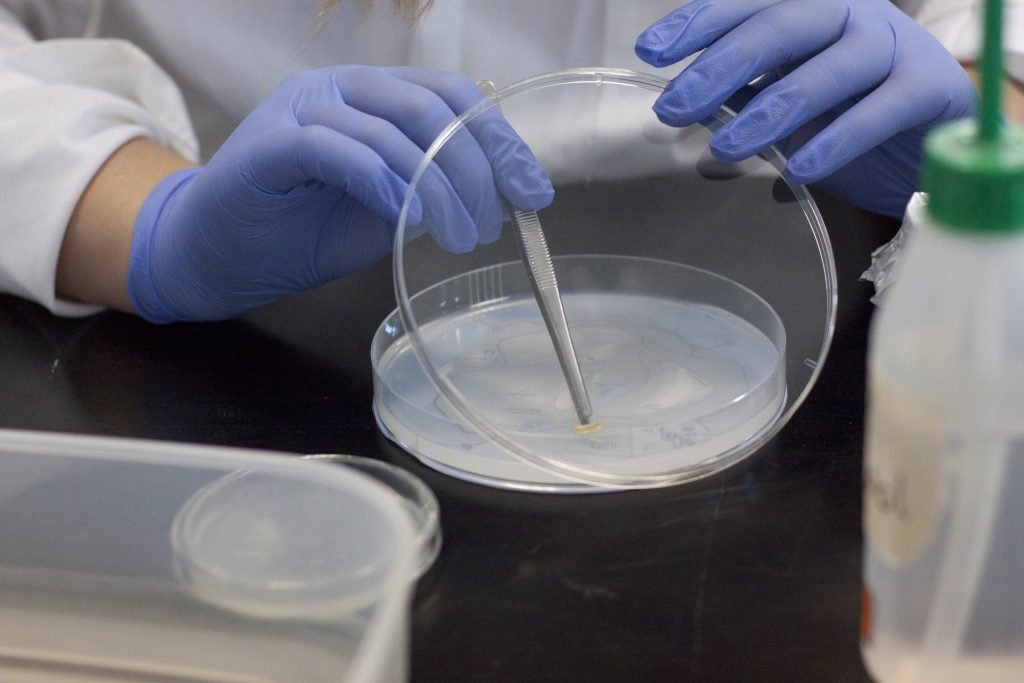Exploring Wild Spaces
It was a chilly, windy autumn day at Holyrood Park in Edinburgh. The ASCUS Team, Robert May from Historic Environment Scotland and artist Tina Scopa saw the group of students and teachers from Edinburgh Montessori Arts School approaching them. This was it, our Unearthing Micro Life programme that had been postponed so many times was finally happening! What followed was seven wonderful weeks of learning, exploration, discovery, laughter, insightful conversations, beautiful creations, storytelling and much, much more as students worked towards completing a John Muir Award!
Slime mould, a yellow, slimy, hungry and very clever microorganism that we placed on Petri dish maps of Holyrood Park in the first week of the programme, helped us navigate the most efficient path to two sites in the park where we would be spending time over the next few weeks.
Following the Slime Mould growth to navigate our way through the park
With Rob urging us to look closely at nature, at the first site, Hunter’s Bog, we realised there is so much more than dry grass in the park. Tina reinforced this message by helping us explore all the different plant species creatively by letting the plants draw themselves through a plant printing activity creating stunning impressions of the natural world we were immersed in.
The second site was the Wells ‘O Wearie, where we marched through muddy terrain and determined the health of the pond water by looking at the diversity of invertebrate creatures in the water from the millions of teeny tiny mites, to the larger larvae that were in our sample dishes. We tuned into nature, looking for natural pigments in soil and other natural materials, creating beautifully textured artworks. Rob helped us understand the importance of biodiversity, and ecosystems through fun, interactive games as well as the importance of conserving our wild spaces so that all ecosystems can thrive, with the students all-time favourite activity helping the park rangers make a fire breaks in the park and continuing naturalist, John Muir’s legacy.
Did you know that even on wet days, the Gorse in Holyrood Park can be a major fire hazard due to having high amounts of oils in its leaves?
Images: Creating a fire break in the gorse in Holyrood Park, Learning about the different plants found in Holyrood Park, Exploring pigments and texture of natural materials, Exploring the biodiversity of aquatic life, Making conclusions about the quality of the water in the pond, Creating plant prints.
While in the park, students collected samples that interested them to explore further in ASCUS Lab where they were able to see what John Muir meant when he said “when one tugs at a single thing in nature, [they] find it attached to the rest of the world.” Seeing someone’s first time in a real-life lab is always a joy. The bright eyes and awe-struck faces as they take in all the strange looking bits and bobs, machines whirring, and the weird smells that can sometimes linger from microbes-gone-past. This time was no different. Students looked at their samples under the microscope, and learnt microbiology techniques that allowed them to grow the microorganisms living on their samples, creating the most beautiful compositions of bacterial and fungal colonies on petri dishes, in addition to creating their own microbial ecosystems in the form of a Winogradsky Column, making the invisible world of living things visible.
Images
Observing a Winogradsky Column
Getting lost in microscopy
Learning the skills of a microbiologist
Seeing what microorganisms grew on the petri dishes
Beautiful microbial colonies grown from samples collected from the park
Processing samples from Holyrood Park in the lab.
It was amazing to see how this group of students became so immersed in each of these activities that often times, their teachers had to convince them it was time to go back to class so they could have lunch! By the end of the seven weeks, we had a group of budding naturalists, artists and microbiologists that have been creating videos about their experience and some of the things they learned during their time with us. We can’t wait to see these on the 17th January 2022 when we award them with their well-deserved John Muir Discovery Award certificates at our pop-up exhibition. This is an outdoor exhibition with few snapshots of what the 7 weeks entailed along the path leading into Holyrood Park from the parking lot opposite the Scottish Parliament Pools. The exhibition will run from the 17th January 2021- 24 January 2021 so keep an eye out!
We are hoping to get the funding we need to run this amazing programme again, so if you work with young people and would be interested in supporting or participating in our 2022 Unearthing Micro Life programme, please do get in touch with us. In the meantime, create some of your own plant prints and Winogradsky Columns at home following the DIY videos on our Learning Zone which will be freely available during the week of our pop-up exhibition! We would love to see your creations if you post them online so be sure tag @ascusartandscience and use the #UnearthingMicrolife hashtag!





